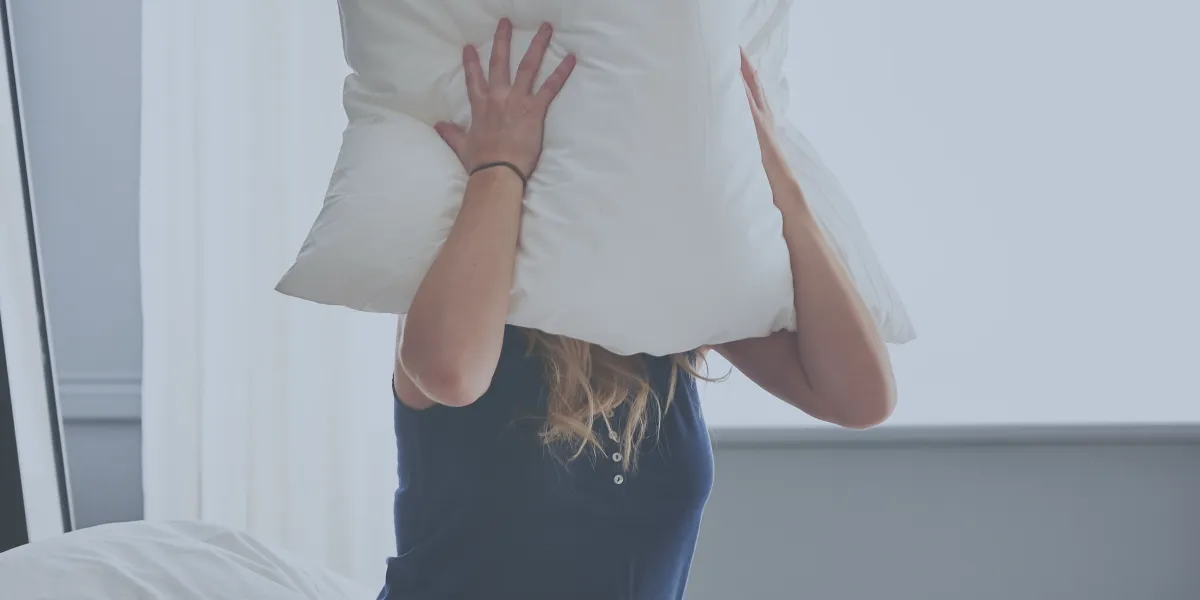Medical Health Tips & Checklists
Click on the image to download your age checklist
Get the checklists and tips you need to keep
on top of key women's physical health issues
Often we make appointments with our GP only because we feel there is something wrong with us, we get 'reactive care' and usually we unrealistically expect that all our health issues can be reviewed and considered in the average 15 minute consultation. We avoid the 'proactive' care and checkups blaming being time poor, not knowing what to ask for or feeling uncomfortable about the appointment, but the reality is the proactive is often more critical. You can avoid huge wellness, financial, employment, relationship and mental health issues if you are proactive in your care and get educated and know what to ask for and when.
Regular health check-ups can identify any early signs of health issues. Finding problems early means that your chances for effective treatment are increased. Many factors, such as your age, health, family history and lifestyle choices, impact on how often you need check-ups.
IMPORTANT:
Below are just the key checklists that doctors will commonly recommend per decade of a woman's life. Within that decade though you may be required to have the specific checkup or action once (such as tetanus injection usually every ten years) or it may be that in that decade you need to annually do the test with your doctors. For some people who have a family history, prior medical condition, smoke, have other addictions, or just concerns they have noted, the tests in that decade of your life may significantly more to try to detect and prevent as soon as possible, any health concerns.
You can interact with this PDF document to add any comments you have in relation to some of these key items.
Why Regular routine check up's could save your life - even if you are not feeling unwell!
It is a good idea to visit a doctor regularly, even if you feel healthy. Just like your car gets a service, after a certain number of kilometres, even if it seems ok with no obvious sign of repairs.
The purpose of these visits is to:
❤️check for current or emerging medical problems
❤️assess your risk of future medical issues
❤️prompt you to maintain a healthy lifestyle
❤️update vaccinations (including but not limited to shingles, tetanus, whooping cough, flu, travel required vaccinations)
Health checks are usually incorporated into routine medical care but you may need to ensure you have booked enough time for a review and diarise these checks yourself as you may/may not ever be sent prompts to do it.
Having a health check is also a time to examine your lifestyle to see what improvements can be made. This may be something you regularly do yourself or discuss with a healthcare professional.
WHAT REGULAR SELF-HEALTH CHECKS YOU CAN BE DOING AT HOME
You can do a basic health check at home to review your health in relation to:
Alcohol consumption - people who have at least 2 alcohol-free days per week and keep their drinking days to 2 standard drinks per drinking day have better long-term
health. For more information on alcohol refer to this website (Reducing alcohol and quitting smoking)
Smoking – smoking increases your risk of many diseases, including heart disease, stroke, lung disease and thin bones. If you smoke, quitting as soon as possible helps reduce the harm. For more information on the risks of smoking and how to get help to stop for good, refer to our website at..
Dental care – cleaning your teeth regularly and eating a low-sugar diet can reduce your risk of tooth loss, tooth decay, gum disease. You should have an annual dental check and professional clean to help reduce these issues. Poor dental health is also often connected to heart disease.
Diet and nutrition– a healthy diet improves your general health and wellbeing.
For further details on nutrition refer to this website at..
Physical activity– regular physical activity is good for your mental health, heart and bones, and can prevent many diseases. Ideally the health goal is for 30 minutes to an hour of moderate physical activity a day. Moderate physical activity takes some effort, but it is considered to be at a point where you can still have a conversation (for example, briskwalking, social tennis). Light weights help considerably especially in your 40s plus.
Skin checks–currently, there is no set guideline regarding how often Australian adults should get their skin checked. Cancer Council recommends that you regularly monitor your own skin via self-examination and visit a GP if you notice any changes or new suspicious spots (moles, freckles, dark stain/patch etc). A GP can refer you to a specialist if required.
If you have sunbaked a lot or work outdoors or have a family history of melanoma or other skin disease, you should have a thorough yearly examination by a doctor who specialises in skin checks and/or a dermatologist (get a referral from your GP). A full skin examination, supported with photography and dermoscopy, may be necessary every 6-12 months.
While protection from UV radiation is the best defense against skin cancer, regular skin checks via self-examination for new and changed spots and early detection strategies are an important approach to reducing your risk of skin cancer. This is because most melanomas are found by the person with the melanoma, or their partner.
For details of how to check for skin cancer refer to the diagram below from Cancer Council NSW.
Weight - maintaining a healthy weight range helps prevent longer-term diseases, such as heart disease, diabetes and arthritis.
Regular health checks can help to identify early warning signs of disease or illness. Heart disease, diabetes and some cancers can often be picked up in their early stages, when treatment may be more successful.
When you have a check, your doctor will talk to you about:
➡️your medical history
➡️employment (to determine possible impact on your health)
➡️your family’s history of disease such a heart, diabetes, stroke,
➡️lifestyle generally (including your diet, weight, how much you exercise)
➡️whether or not you smoke and drink alcohol or take illegal drugs
Regular checks may help your doctor pick up early warning signs. If you have a family history or high risk for other reasons of a particular health condition, your doctor may recommend more frequent health checks at an earlier age.
These are some common tests, but your doctor may recommend others according to your situation.
SUMMARY OF HEALTH CHECKS OFTEN SUGGESTED BY YOUR DOCTOR:
1. HEART CHECKS
Blood pressure
Your blood pressure is usually checked every 2 years if it is normal, you are aged under 40 years, and there is no family history of high blood pressure.
Have it checked yearly or more regularly if you are over 40, your blood pressure is on the high side, or you have a personal or family history of high blood pressure, stroke or heart attack. Be advised by your doctor.
Blood tests
They will check your cholesterol levels and blood triglycerides, iron levels, and thyroid among other things. High levels may indicate an increased risk of various health problems, including heart disease.
If you are over 45, the doctor is likely to suggest blood tests about once every 5 years. If you are at high risk of heart disease and have a family history, you should be tested every year from the age of 40.
Electrocardiogram (ECG)– this is a non-invasive and painless medical test that detects cardiac (heart) abnormalities by measuring the electrical activity generated by the heart as it contracts.
Obesity tests – being overweight is a significant risk factor for many health conditions, including cardiovascular disease and diabetes. Ask your doctor to check your body mass index (BMI)and waist measurement every 2 years. If you are at a higher risk, you should have your weight checked more frequently.
Anyone 45 years and over, or 30 years and over for Aboriginal and Torres Strait Islander peoples, should have a regular heart health check with their doctor. A heart health check is a 20-minute check-up with your GP to assess your risk of having a heart attack or stroke. Heart health checks are covered by Medicare and are free at practices that bulk bill this service.
2. DIABETES TESTS
This is a serious condition where glucose (sugar) in the blood becomes higher than normal. People with diabetes can have difficulty changing glucose into energy which leads to higher levels of sugar in the blood (hyperglycaemia). Your blood glucose levels are normally controlled by a hormone called insulin. Diabetes happens when your
pancreas can’t produce enough insulin or when your body can’t use the insulin because it’s resistant to it.
There are several types of diabetes:
type 1 diabetes
type 2 diabetes
gestational diabetes, which happens when a woman has high blood glucose levels during
pregnancy pre-diabetes, where your blood glucose levels are higher than normal, but not high enough for a diagnosis of diabetes
What are the most common symptoms of diabetes?
Being very thirsty or hungry
passing more urine (wee) than usual
feeling tired
unexplained weight loss (for type 1 diabetes), or gradual weight gain (for type 2 diabetes)having cuts that heal slowly
itchy skin or skin infections
blurred vision
https://www.healthdirect.gov.au/symptom-checker
Type 1 diabetes is usually spotted quickly as symptoms can appear suddenly.
Many people with type 2 diabetes don’t have any symptoms at all or have signs that go unnoticed for a long time
Testing for diabetes
Tests for diabetes include a laboratory blood glucose test ordered by your doctor (not using a home blood glucose meter). The most common test is the fasting blood glucose test (no food or fluid except water for eight hours before). Others include a test taken anytime during the day with no preparation, glycosylated haemoglobin (HbA1c) test, or an Oral Glucose Tolerance Test (OGTT).
Talk to your doctor about having your risk of diabetes assessed and how often you should be tested.
Your risk of developing type 2 diabetes over the next 5 years can be assessed by completing the Australian type 2 diabetes risk assessment tool (AUSDRISK), a short list of questions.
You can complete AUSDRISK by yourself, or with the help of a health professional or practice nurse to assess the risk of a person developing type 2 diabetes over the next 5 years.
You can complete the tool in 1 of 3 ways:
using the online interactive version
using the online non-interactive version
downloading the PDF version
and completing it on paper.
If you get a 'high' score on AUSDRISK, you are eligible to attend a type 2 diabetes risk evaluation by your GP if you are aged:
40 to 49 years (inclusive)15 to 54 years (inclusive) for Aboriginal and Torres Strait Islander people.
Risk Factors for Getting Diabetes
Type 2 diabetes risk factors including - you have pre-diabetes, a family history of diabetes (for example, if you have a first-degree relative with type 2 diabetes) and/or are over 55 years. The risk increases with age, are over 45 years and overweight and obese or have high blood pressure are over 35 years and from an Aboriginal or Torres Strait Islander background, or from a Pacific Island, Indian subcontinent or Chinese cultural background, had gestational diabetes during a pregnancy, have polycystic ovarian syndrome (PCOS)have cardiovascular disease such as past history of heart attack, angina, stroke or narrowed blood vessels taking certain antipsychotic medication or corticosteroid medication.
Other lifestyle risk factors include:
➡️being overweight or obese, especially around the waist
➡️sedentary lifestyle – having low levels of physical activity, including more than two hours of television watching per day
➡️unhealthy eating habits, such as regularly choosing
➡️high-fat,high-sugar,high-saltorlow-fibre foods
➡️cigarette smoking.
3, BOWEL CANCER CHECKS
Screening for bowel cancer in people aged 45 to 74 who do not have any symptoms, helps to find cancer early. The bowel cancer screening test uses chemicals to check a bowel motion sample for blood, which may be a sign of bowel cancer.
The National Bowel Cancer Screening Program sends free test kits in the mail to people aged 50 to 74, every 2 years (to the address connected to your medicare card)
If you are between the age of 45-49, you can also request your first free bowel screening kit to be mailed to you. If you have a family history of bowel cancer, please talk to your doctor about what screening options are right for you. People at high risk of bowel cancer may need a colonscopy more regularly. During this test, the doctor inserts a slender instrument called a colonoscope through the anus to visually check the rectum and large bowel for any abnormalities.
4. EYE CHECKS FOR VISION AND EYE HEALTH
Eyesight tends to deteriorate with age. Serious eye concerns can include cataracts, skin cancer on the eye, cataracts, mascular degeneration,
diabetic retinopathy.
People older than 65 years should have an annual examination, however, more frequent testing may be recommended for those with certain risk factors, such as:
a family history of eye disease,
a personal history of eye disease or injury,
certain medical conditions such as high blood pressure or diabetes,
taking certain medications.
If you already wear prescription glasses or contact lenses, you should have your eyes tested every year. Adults who do not wear prescription glasses or contact lenses should have an eye test every 2 years.
5. STI'S Sexually transmissible infections (STI) screening
If you are sexually active, you should get tested for chlamydia every year between the ages of 15 and 29, using a simple urine test. Chlamydia is very
common and does not always show symptoms.
If you are at risk of other sexually transmissible infections such a herpes or HIV/AIDS raise your concerns and ask your doctor about further testing.
6. BONE DENSITY CHECKS - OSTEOPOROSIS
Advancing age is a significant risk factor for osteoporosis. Osteoporosis is a disease characterised by low bone density and the weakening of the building blocks
that make up your bones.
People living with osteoporosis have porous, fragile bones, which can lead to an increased risk of fractures (broken bones).
If you have higher-than-average risk factors for osteoporosis your doctor might refer you for a bone density scan.
Bone density scans are widely accessible, painless, are often covered by Medicare and involve minimal levels of radiation.
What is a bone density scan?
A bone density scan is a medical test used to help diagnose osteoporosis and are also used to help see whether your risk of developing osteoporosis in the future is
higher than average. As a result, people living with osteoporosis have porous, fragile bones, leading to an increased risk of bone
A bone density scan is also known as a bone density test, a bone mineral density test or by its medical name, a DXA test.
How does a bone density scan measure my bone strength?
A bone density scan is done using a special type of x-ray called a dual energy x-ray (DXA). The DXA measures bone mineral density. The scan gives you and
your doctors information about your bone strength or fragility (weakness), and your risk of fractures. In general, the lower your bone density, the higher your
risk of having broken bones in the future.
Do I need a bone density scan?
If you are at risk of getting osteoporosis, your doctor will refer you for a bone density scan.
People with an average risk of getting osteoporosis include:
post-menopausal
females aged 45 years and and males over 50 years
People with a high risk of osteoporosis include males over the age of 60 years and females over the age of 50 years who also:
have a family history of a fragility fractures
smoke or have a high alcohol intake
have vitamin D deficiency
have low body weight
have recurrent falls
are immobile (cannot walk or do housework without help) or have low levels of physical activity.
Some medical conditions can also put you at an increased risk of developing osteoporosis. If you have one of these conditions, your doctor may refer you for a bone density scan.
Health conditions include:
endocrine (hormone) disorders
early menopause
anorexia nervosa
inflammatory conditions and conditions causing malabsorption(problems in your digestive tract or gut)
chronic kidney or liver disease
diabetes
HIV
Taking certain medicines can also increase your risk of osteoporosis, so if you take one of the following medicines, your doctor may refer you for a bone density scan to check your bone health.
Your doctor will review all factors and assess your overall fracture risk. If you have already had a fracture, and based on your other risk factors, your doctor will work out if your risk of more fractures is higher than average. If you are, you will most likely be referred for a bone density scan.
For example, if you are over 45 years of age, and have broken a bone after a minor fall or incident (known as a ‘low-trauma fracture’), if you are a female who has gone through
menopause or if you are an older male who has had a vertebral fracture (a break to one of the bones in your spine), you will likely need a bone density scan.
6. Breast cancer screening - 1-7 Australian women - are you eligible and been to have your breast screen? BOOK IN! Even if you are not eligible, GO SEE THE DR!
Breast cancer is the most common cancer affecting Australian women. It can occur at any age, but it is more common in women over 60.
Watch the important Utube video - "listen to your body- make the effort to book in and have a scan to look after your body." It's the ultimate act of self care!
Breast screening (also known as mammogram) is one of the best ways to detect breast cancer early. If breast cancer is found early, it is more likely to be successfully treated and improve your chance of surviving it.
BreastScreen Australia invites women aged 50 to 74 for free mammograms every 2 years.
If you are in your 40s or over 75, discuss the risks and benefits of screening with your doctor. Women under 40 are not eligible for the screening program but can have a mammogram done with a GP's referral at any age.
It is important that at any age, if you notice any breast symptoms or a change in the look and feel of your breast to see your doctor without delay.
7. Cervical screening test
Having regular cervical screening tests can help prevent cervical cancers through early detection and treatment.
Cervical cancer screening is recommended every 5 years for women and people with a cervix who are aged 25 to 74 years and have ever been sexually active.
The cervical screening test (which replaced the pap test) checks for the presence of the human papilloma virus
– a virus that can cause cervical cancer.
Even if you have been vaccinated against HPV, regular cervical screening is still important as the vaccine does not protect against all types of HPV infection.
Screening is available for eligible people through the National Cervical Screening Program.
You can usually collect your own vaginal sample if they choose, this is called self-collection. Self-collection is a safe and effective method of testing.
8. Pregnancy
You should have a general check-up before becoming pregnant to discuss any health risks during pregnancy. Once you are pregnant, regular antenatal checks help monitor your baby’s development, pick up abnormalities and assess your health.
Tests related to pregnancy may include ultrasound scans, urine tests, blood tests and genetic testing.
Some antenatal tests are recommended for all pregnant women, while others are only necessary for women at increased risk of complications.
Be advised by your doctor.
Women's Wellness Hub Directory
Physical and Emotional Health & Wellness
Social Wellness
Financial, Legal and Safety wellness
Women's Wellness Blog

Yikes - another leak
Why am I leaking?
Urinary incontinence — the loss of bladder control — is a common but often inconvenient and embarrassing problem which can rob us of our self esteem and confidence. The severity ranges from occasionally leaking urine when you cough or sneeze to having an urge to urinate that's so sudden and strong you don't get to a toilet in time.
Though it occurs more often as people get older, urinary incontinence isn't an inevitable consequence of aging. If urinary incontinence affects your daily activities, don't hesitate to see your doctor. For most people, simple lifestyle and dietary changes or medical care can treat symptoms of urinary incontinence.
Symptoms
Many people experience occasional, minor leaks of urine. Others may lose small to moderate amounts of urine more frequently.
Types of urinary incontinence include:
· Stress incontinence. Urine leaks when you exert pressure on your bladder by coughing, sneezing, laughing, exercising or lifting something heavy.
· Urge incontinence. You have a sudden, intense urge to urinate followed by an involuntary loss of urine. You may need to urinate often, including throughout the night. Urge incontinence may be caused by a minor condition, such as infection, or a more severe condition such as a neurological disorder or diabetes.
· Overflow incontinence. You experience frequent or constant dribbling of urine due to a bladder that doesn't empty completely.
· Functional incontinence. A physical or mental impairment keeps you from making it to the toilet in time. For example, if you have severe arthritis, you may not be able to unbutton your pants quickly enough.
· Mixed incontinence. You experience more than one type of urinary incontinence — most often this refers to a combination of stress incontinence and urge incontinence.
When to see a doctor
You may feel uncomfortable discussing incontinence with your doctor. However, if incontinence is frequent or is affecting your quality of life, it's important to seek medical advice because urinary incontinence may:
· Cause you to restrict your activities and limit your social interactions
· Negatively impact your quality of life, self esteem and confidence
· Increase the risk of falls in older adults as they rush to the toilet
· Indicate a more serious underlying condition.
This site is brought to you by Family Counselling Support Network
Book in directly with one of our professionals today

We are here to help

We are committed to protecting your personal information and respecting your privacy. This website uses cookies to analyze website traffic and optimise your website experience. By accepting our use of cookies, your data will be aggregated with all other user data.
DISCLAIMER: The material contained on this website is for general educational and information purposes only and is not a substitute for professional legal, financial, medical or psychological advice or care. While every care has been taken in the information provided, no legal responsibility or liability is accepted, warranted or implied by the authors or Family Counselling Support Network and any liability is hereby expressly disclaimed. For specific advice please contact us at [email protected]. All information contained on the website remains the intellectual property of Family Counselling Support Network and is for your personal educational use only. The information must not be reproduced or distributed without the express permission of Family Counselling Support Network.
Family Counselling Support Network acknowledges and respects the First Nations Custodians of the land where our offices stand, and where we work to help Australians. We pay respects to their Elders, past present and emerging, lore, customs and creation spirits. We recognise that these lands have always been places of ceremony, teaching, research and learning, and we acknowledge the important role Aboriginal and Torres Strait Islander peoples play in our community.
We are committed to providing an inclusive and accessible environment where people and communities of all identities and backgrounds are accepted, safe and celebrated.
Privacy Policy | Terms and Conditions


























